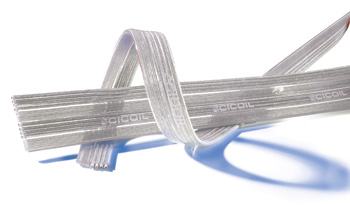Howard Lind on Cable Trends for Motion-Centric Automation

In a recent Motion System Design article, the editors of that magazine asked Howard Lind, President of Cicoil, for his thoughts on cable trends. Reprinted here are excerpts from that article:
Cable guys: Motion System Design
In this forum, Motion System Design editors speak with industry experts about the latest trends in cable design and cable carrier systems for today's motion-centric automation environment.
Q: HOW DO CABLE AND CARRIERS TRANSLATE TO PRODUCTIVITY?
Howard • Cicoil: To maximize productivity, cabling must squeeze into ever smaller spaces, while shedding weight and the associated inertia that otherwise bogs down everything trying to move. Automated equipment is expected to achieve 100% accuracy and uptime, and cabling is often the key to success.
Q: WHAT ARE SOME CHALLENGES WHEN SPECIFYING CABLE AND CABLE CARRIERS?
Howard • Cicoil: The first challenge comes from the fact that most cabling is made up of round wire, and the engineer is usually forced to choose standard catalog cables, as custom cables have long lead times and are often too expensive. A second challenge comes from the high speed, repetitive motion required in most automation equipment. Most cables are not rated for flex cycles, or bend radius, so engineers are left to their own devices to specify cabling. The result is often premature cable failures and high warranty costs. Selecting cable that will last through dynamic motion cycles is a critical challenge for automation engineers. Flexible flat cables take up less space than round cables, operate with smaller bend radiuses, and are rated for millions of flexing cycles.
Q: DESCRIBE THE IMPACT NEW MATERIALS ARE LIKELY TO HAVE.
Howard • Cicoil: Extruded silicone flat cables can be used without cable carriers in many applications, saving space, cost, and weight. This gives designers the opportunity to design servo axes that are more responsive and dynamic, as there is less inertia added from cable carriers. Custom silicone flat cables can be designed with individually shielded conductors, reducing EMI, crosstalk noise, and interference, optimizing electrical performance.
Q: HOW WILL CABLE AND CABLE CARRIERS LOOK IN THE FUTURE?
Howard • Cicoil: In the future, cables will become an integral part of the machines in which they are employed, in much the same way that nerves and blood vessels are part of the human body. They will seamlessly attach to fixed and moving structural components, carrying electrical signals, light signals, pneumatics, and fluids exactly where they are needed.
Read the complete article here»
